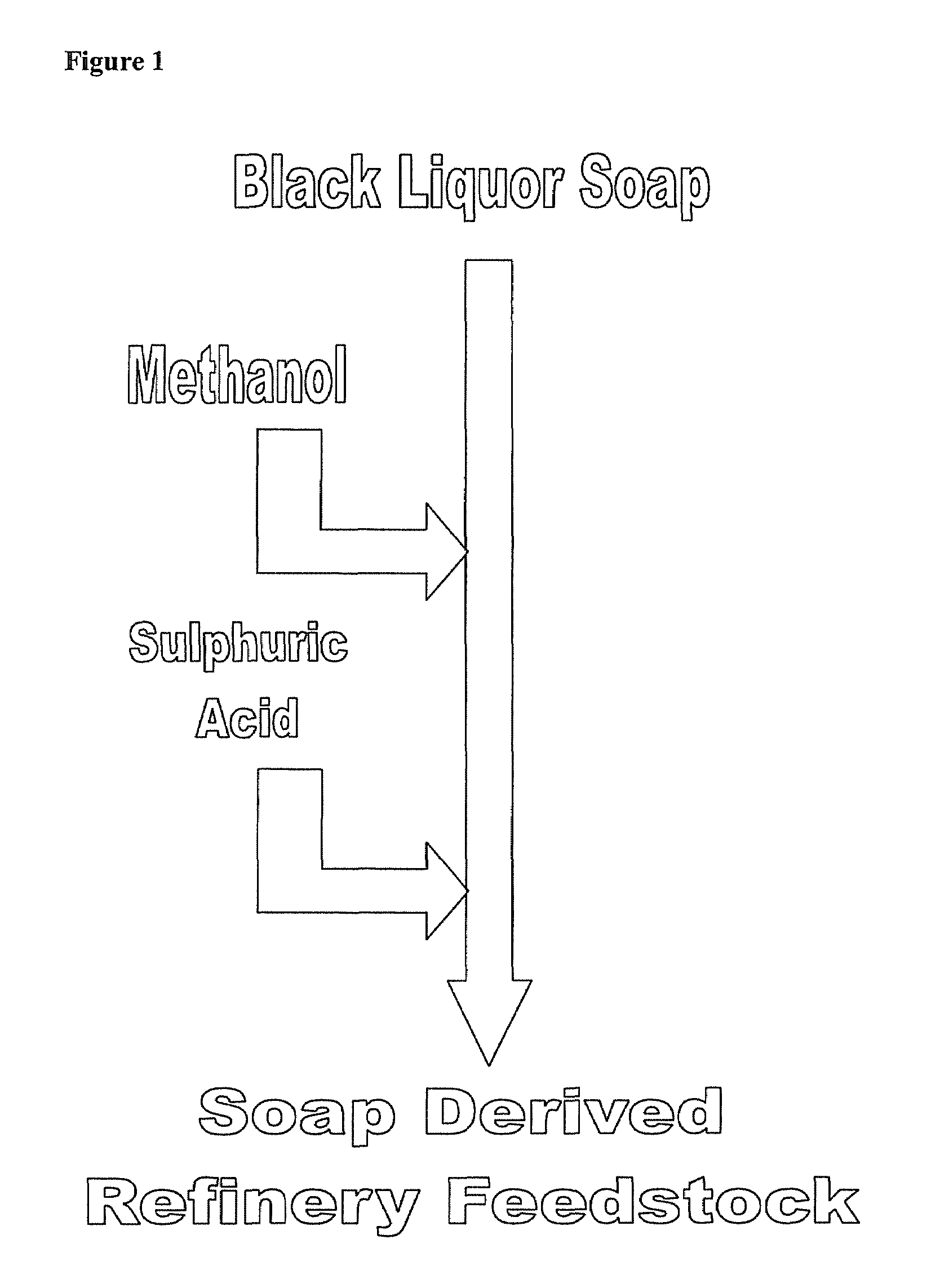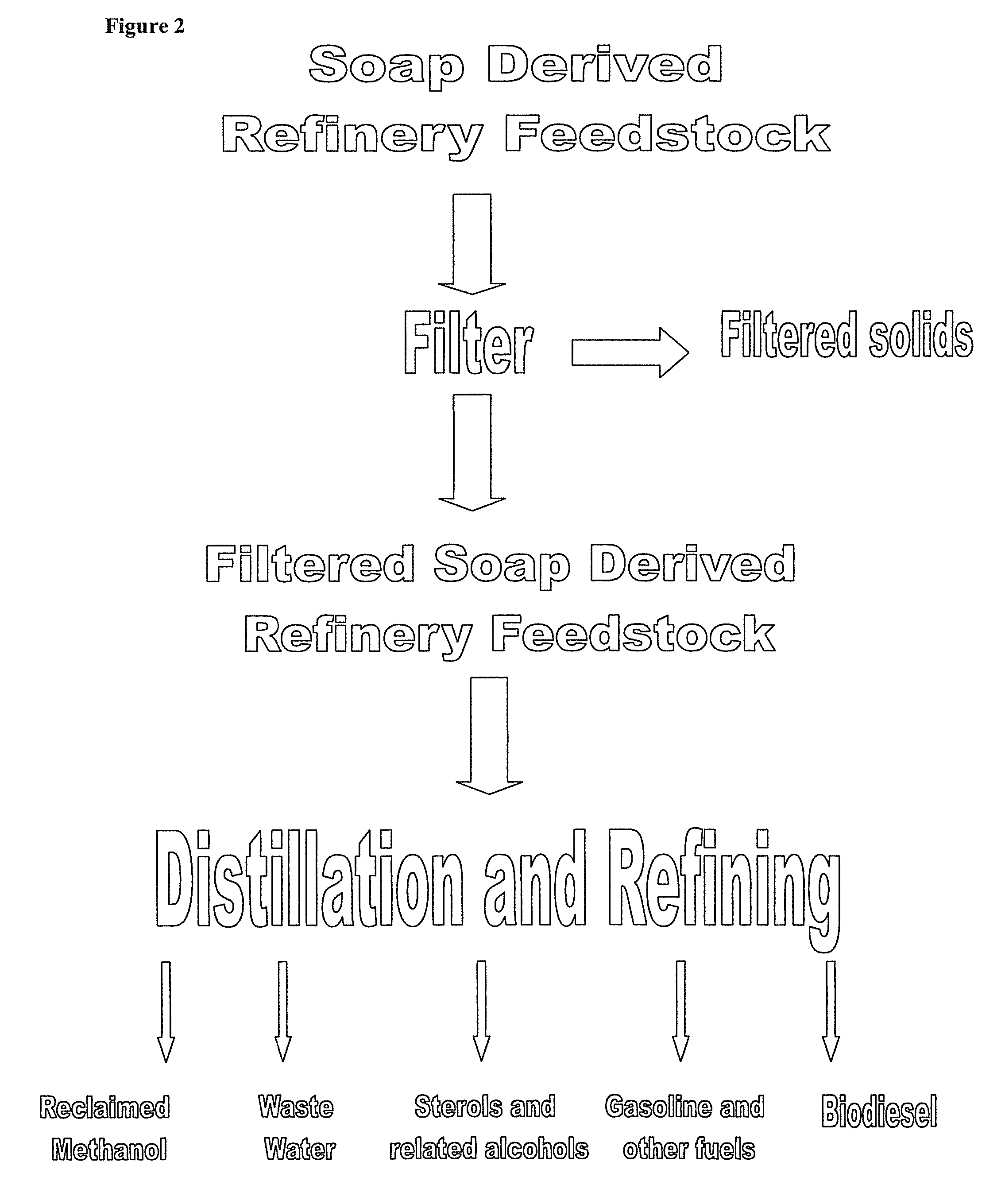Production of a refinery feedstock from soaps produced during a chemical pulping process
a technology of chemical pulp mill and feedstock, which is applied in the direction of climate sustainability, textiles and paper, petrochemical industry, etc., can solve the problems that the process cannot be adapted as a single step in the chemical mill pulping process, and other limitations of the related art will become apparen
- Summary
- Abstract
- Description
- Claims
- Application Information
AI Technical Summary
Benefits of technology
Problems solved by technology
Method used
Image
Examples
Embodiment Construction
[0023]Throughout the following description specific details are set forth in order to provide a more thorough understanding to persons skilled in the art. However, well known elements may not have been shown or described in detail to avoid unnecessarily obscuring the disclosure. Accordingly, the description and drawings are to be regarded in an illustrative, rather than a restrictive, sense.
[0024]Refinery feedstock may be produced from the soap skimmed from pulping liquor in a chemical pulp mill. The resinous material in pines and other species is made up of fatty and resin acids, as well as sterols and related alcohols. During chemical pulp mill cooking of the pulp, the fatty and resin acids become saponified into sodium soaps. Black liquor soap is the sodium salts of resin and fatty acids produced during the chemical pulping process. The inventor has created a process for removing the sodium ion from the black liquor soap and esterifying the resin and fatty acids in a single vesse...
PUM
| Property | Measurement | Unit |
|---|---|---|
| pH | aaaaa | aaaaa |
| temperature | aaaaa | aaaaa |
| temperatures | aaaaa | aaaaa |
Abstract
Description
Claims
Application Information
 Login to View More
Login to View More - R&D
- Intellectual Property
- Life Sciences
- Materials
- Tech Scout
- Unparalleled Data Quality
- Higher Quality Content
- 60% Fewer Hallucinations
Browse by: Latest US Patents, China's latest patents, Technical Efficacy Thesaurus, Application Domain, Technology Topic, Popular Technical Reports.
© 2025 PatSnap. All rights reserved.Legal|Privacy policy|Modern Slavery Act Transparency Statement|Sitemap|About US| Contact US: help@patsnap.com


